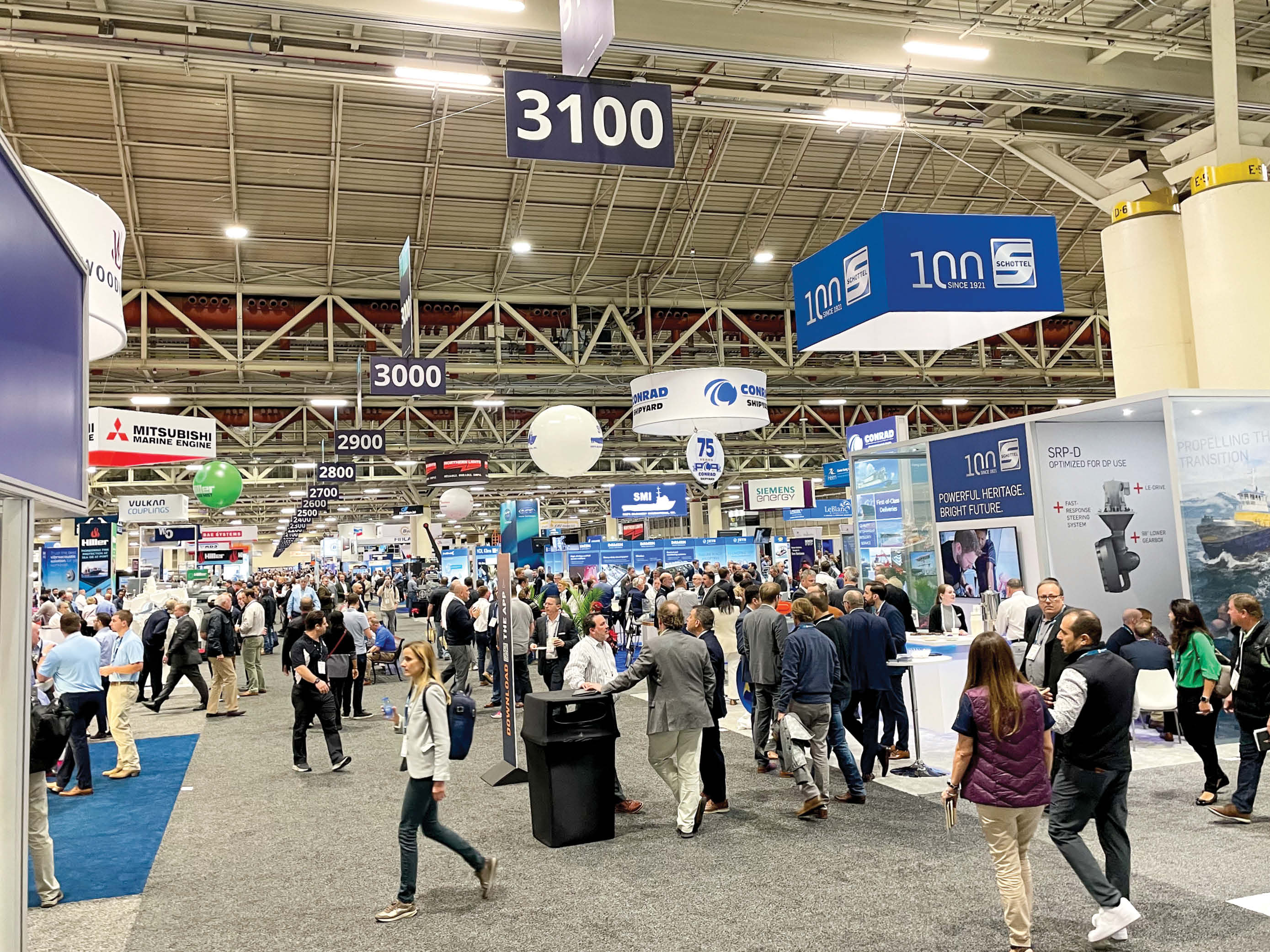This year, it is easy to be positive in my post-International WorkBoat Show assessment. My first thought on the first day of the show was what a relief to finally have conversations that weren’t dominated by Covid. Sure, Covid is still around, but after two-plus years of dealing with the pandemic, it was great to see show attendees so relaxed catching up with old friends and talking business again just like it was in 2019.
At a Think Tank panel session on the inland waterways, speakers voiced concerns over low water and the ongoing worker shortage.
The most heavily attended sessions revolved around offshore wind.
Stability and predictability are two hurdles that the offshore wind industry must clear to build out the new fleet it needs, panelists said at a Think Tank session at the show.
“For us, the biggest challenge is seeing these projects permitted and moved forward,” said William Hanson, senior vice president for market development with Great Lakes Dredge and Dock Co. LLC, which is building the first U.S.-flag subsea rock installation vessel for the U.S. offshore wind market.
“The key is going to be establishing durability for this industry,” said John Begala, the Business Network for Offshore Wind’s vice president for federal and state policy. Administration planners “need to stick by their 16 COPs (construction and operations plans) by the end of their term. Then we can say this industry is on a glide path to success.”
The industry’s top vessel needs are: wind turbine installation vessels, cable laying ships, feeder barges to carry turbine components, service operations vessels and rock-laying ships to place armoring around turbine foundations.
And the needs will be more evident by 2026, said Liz Burdock, CEO and president of the Business Network for Offshore Wind.
Looking at the pace of planned U.S. projects and the supply of vessels, 2026 could be a year of bottlenecks, she said.
As we have done since the U.S. offshore wind sector’s infancy, we will continue to provide updates on the industry in the magazine, on WorkBoat.com and at future WorkBoat shows.






